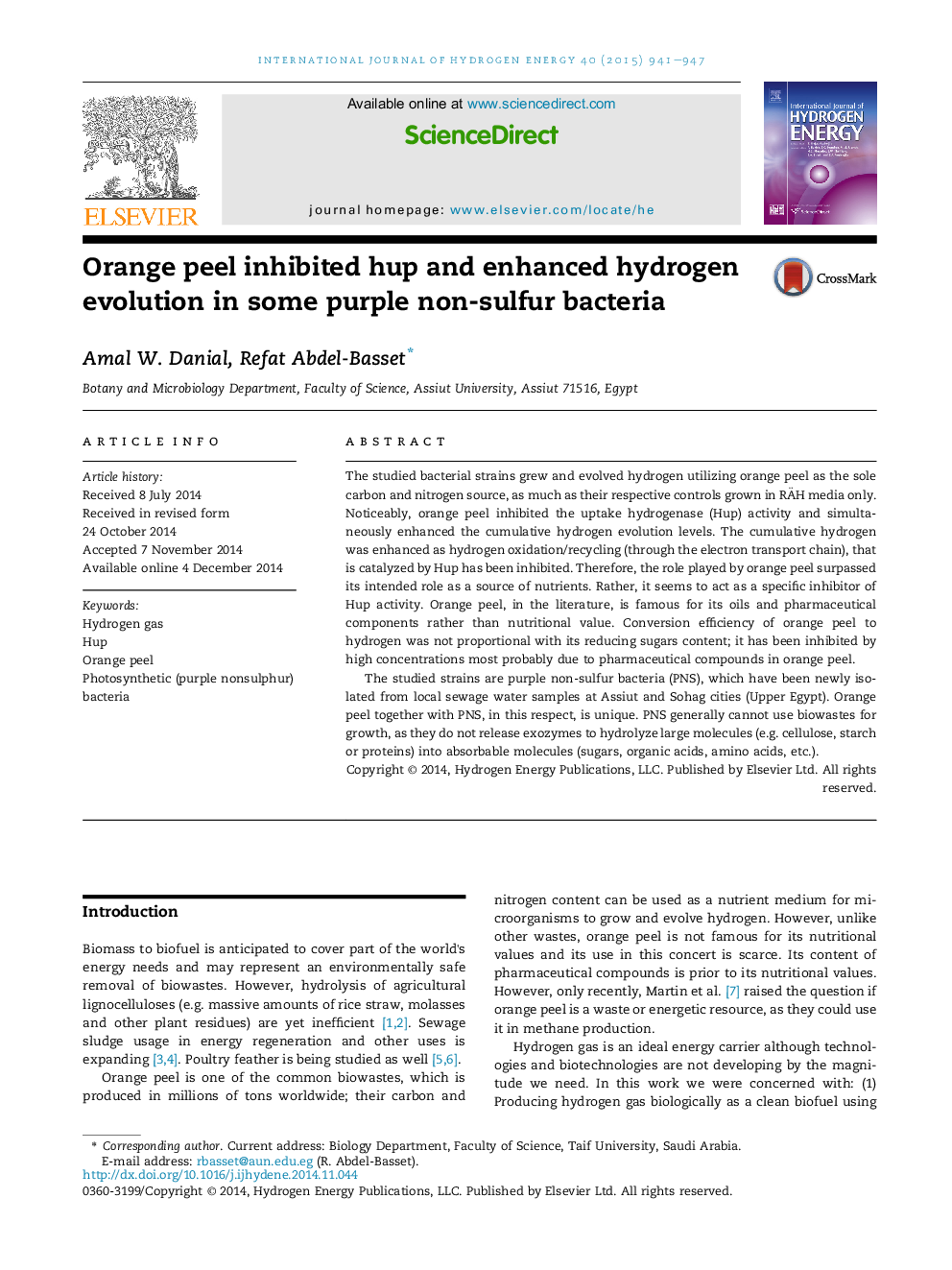| Article ID | Journal | Published Year | Pages | File Type |
|---|---|---|---|---|
| 1270191 | International Journal of Hydrogen Energy | 2015 | 7 Pages |
•The studied bacteria grew and evolved hydrogen utilizing orange peel.•Orange peel inhibited Hup activity, which simultaneously enhanced hydrogen evolution.•Due to its pharmaceutical components, orange peel might have inhibited Hup activity.•The strains are newly isolated PNSB from local sewage water samples.
The studied bacterial strains grew and evolved hydrogen utilizing orange peel as the sole carbon and nitrogen source, as much as their respective controls grown in RÄH media only. Noticeably, orange peel inhibited the uptake hydrogenase (Hup) activity and simultaneously enhanced the cumulative hydrogen evolution levels. The cumulative hydrogen was enhanced as hydrogen oxidation/recycling (through the electron transport chain), that is catalyzed by Hup has been inhibited. Therefore, the role played by orange peel surpassed its intended role as a source of nutrients. Rather, it seems to act as a specific inhibitor of Hup activity. Orange peel, in the literature, is famous for its oils and pharmaceutical components rather than nutritional value. Conversion efficiency of orange peel to hydrogen was not proportional with its reducing sugars content; it has been inhibited by high concentrations most probably due to pharmaceutical compounds in orange peel.The studied strains are purple non-sulfur bacteria (PNS), which have been newly isolated from local sewage water samples at Assiut and Sohag cities (Upper Egypt). Orange peel together with PNS, in this respect, is unique. PNS generally cannot use biowastes for growth, as they do not release exozymes to hydrolyze large molecules (e.g. cellulose, starch or proteins) into absorbable molecules (sugars, organic acids, amino acids, etc.).
